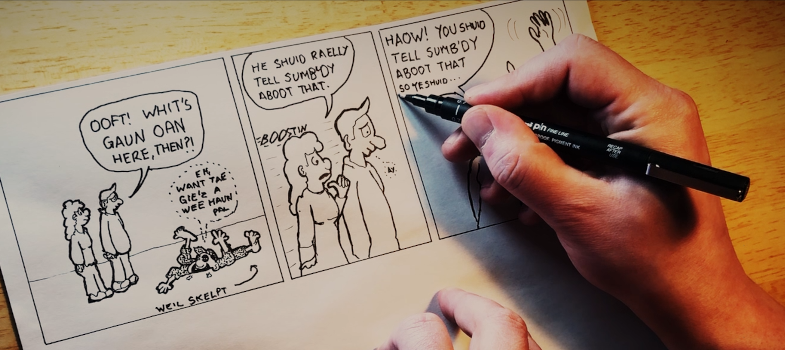Model Answer Unit 3.3 Activity 3A
This is a model answer with reference to songs within the ‘Families, friends and festivals‘ and ‘Working Life’ section of the Scotland's songs section of the Scots Language Centre’s Education resources. You might have noted down other aspects and used a different selection of songs.
-
‘Ye Canny Shove Yer Grannie’ is useful to teach rhyme, as the children can compare the words grannie and mammie. It is also useful in teaching rhythm, as the children can clap their hands in time with the ending of each verse (push push, Hullo grannie, yum yum…).
-
‘Auld Lang Syne’ is my choice for encourage familiarisation with Scots language and also for engaging with culture that is familiar. Depending on whether the children are working within Early or First level, we will either listen to the chorus only, or the chorus and the first three verses. Discussion about the definitions of the words (in particular, auld, lang and syne) could follow. Children could be asked to say the words, ‘old, auld, long, lang’ out loud to encourage them to notice the difference between the pronunciation of the Scots and English words. To help them understand the meaning of ‘Auld Lang Syne’ we could discuss the other words within the song- What is an acquaintance? Would you want to forget your acquaintance or remember them? What does it mean if you call someone ‘dear’?
-
Also, we will ask them about their own Hogmanay traditions (or ones they know of) and I could share some common Hogmanay traditions (What is Hogmanay) and some videos showing Hogmanay celebrations. To engage children with culture that is new to them, we would listen to the chorus and the first few verses of ‘The Shuttle Rins’, a song about a hard-working weaver and his wife. The children would be shown pictures of spinning wheels and hand-looms. Background information to support my teaching of this is in the teacher's information for Weaver’s Cottage, Kilbarchan.
Return to Unit 3
